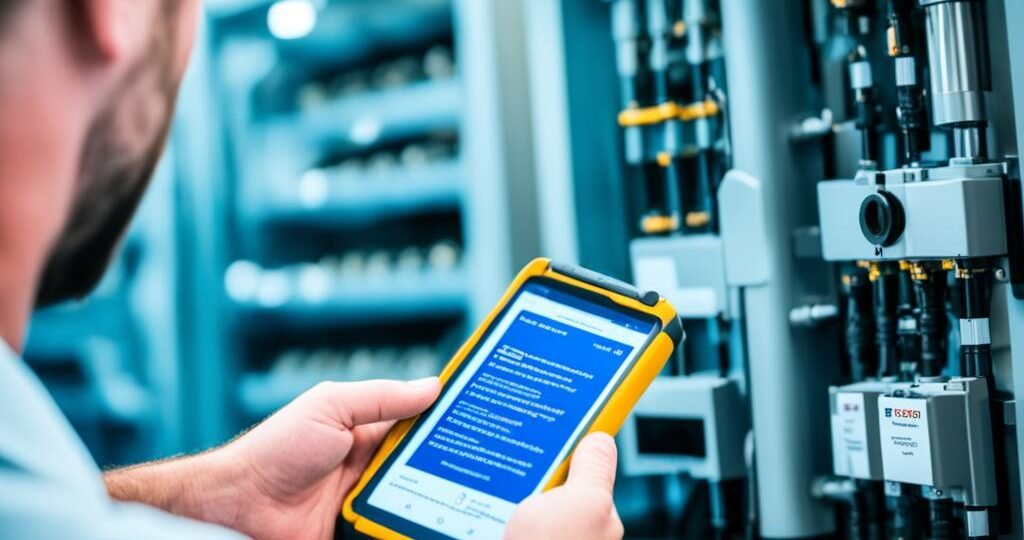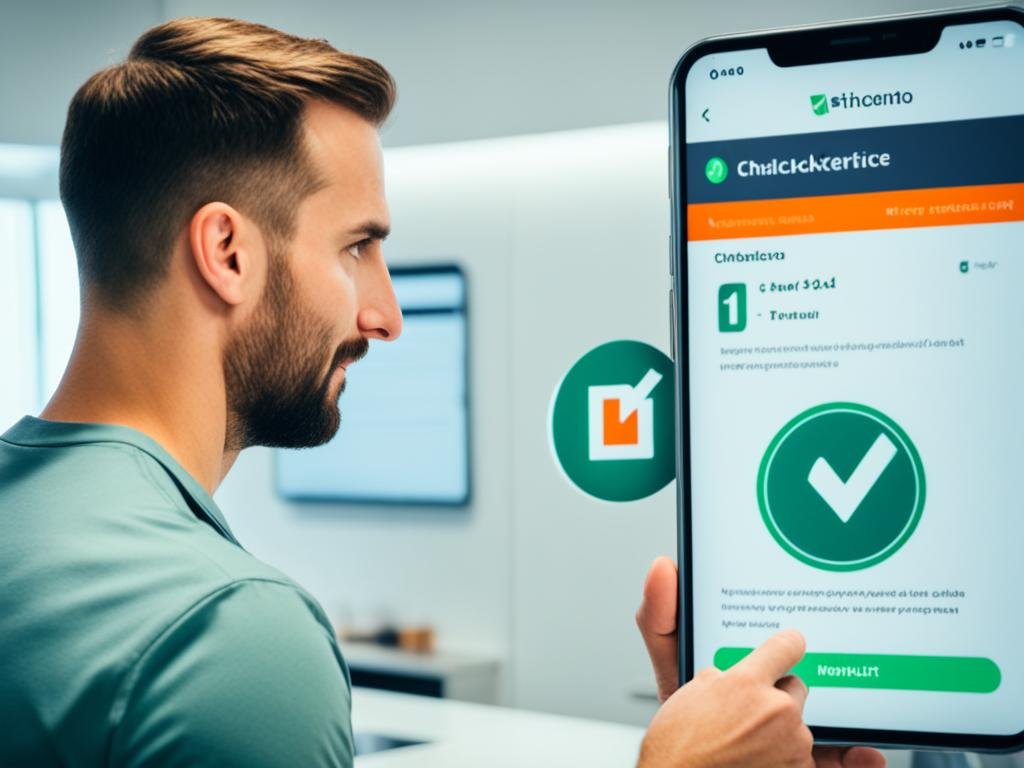How to Perform a Mobile Final Inspection for Quality Assurance
April 11, 2024 | by Rosie Dazzlers

Serving Norfolk and Oxford counties, we bring the shine to you. From sedans to SUVs, experience unmatched convenience and quality right at your doorstep. Trust us to make your vehicle dazzle. Call now and let your car shine!
Key Takeaways:
- Mobile quality assurance is essential to ensure the functionality and quality of mobile phones.
- A comprehensive mobile final inspection process includes quantity checks, package and labeling inspections, functional and performance tests, and more.
- Implementing a mobile inspection checklist and using the right tools can enhance the efficiency of quality control inspections.
- Inspectors play a crucial role in conducting mobile quality control inspections and ensuring the accuracy of the process.
- Mobile quality control inspections help optimize the functionality and usability of mobile phones.
The Importance of Mobile Quality Assurance
Quality assurance plays a crucial role in the mobile phone industry. With billions of smartphones being manufactured and shipped worldwide, it is essential to ensure that each device meets the required standards of quality and functionality.
A comprehensive mobile quality assurance process includes various inspections, tests, and checks to identify any defects, errors, or issues in the devices. By implementing best practices for mobile final inspection, manufacturers can optimize the quality assurance process and ensure customer satisfaction.
Quality control in mobile inspection is vital to maintaining the integrity of the devices before they reach the market. Implementing effective and efficient inspection procedures can help identify and address any quality issues, ensuring that the end-users receive top-notch products.
By following the best practices for mobile final inspection, manufacturers can minimize the risk of delivering faulty or substandard mobile phones to the market. These practices include:
- Thoroughly checking all components and features of the devices.
- Conducting rigorous functional and performance tests.
- Verifying the accuracy of measurements and specifications.
- Ensuring proper packaging and labeling.
Implementing these best practices enables manufacturers to enhance the overall quality control process and deliver mobile phones that meet or exceed customer expectations.
Optimizing Mobile Final Inspection
Optimizing the mobile final inspection process is crucial for manufacturers in the mobile phone industry. It ensures that every device undergoes a stringent quality control check, leaving no room for errors or defects that may compromise the user experience.
One way to optimize mobile final inspection is by utilizing advanced quality control tools and software. These tools enable manufacturers to automate the inspection process, streamline data collection and analysis, and generate comprehensive reports for actionable insights.
Additionally, training and educating inspection personnel on the best practices and industry standards contribute to a more efficient and effective inspection process. With proper training, inspectors can identify potential quality issues more accurately and provide valuable feedback for improvements.
By adopting best practices and leveraging technology, manufacturers can ensure that mobile final inspection is conducted at the highest quality standards, resulting in customer satisfaction and brand loyalty.
| Benefits of Optimizing Mobile Final Inspection |
|---|
| Improved product quality and reliability |
| Enhanced customer satisfaction |
| Reduced returns and warranty claims |
| Strengthened brand reputation |
| Increased operational efficiency |

Mobile Inspection Checklist
A mobile inspection checklist is a crucial tool for conducting thorough quality control inspections. It enables us to ensure the overall quality of mobile phones by systematically evaluating various criteria and parameters. By following this checklist, we can identify and address any issues or defects in the devices, ensuring that they meet the desired standards of quality and functionality.
Packaging Requirements
- Verify that the packaging materials are intact and undamaged.
- Check if the packaging design and labels comply with the brand’s specifications.
Visual Inspection
- Examine the materials and workmanship for any visible defects or flaws.
- Ensure that the devices are free from scratches, dents, or other physical damages.
Physical Requirements
- Weigh the devices to confirm they meet the specified weight requirements.
- Measure the dimensions of the devices to ensure they meet the required standards.
Functional Tests
- Perform specific functional tests to check the device’s performance, such as screen responsiveness, camera quality, audio output, and connectivity.
- Verify that the mobile phones meet the required performance benchmarks.
Barcode Verification
- Scan the barcodes to ensure they match with the device and corresponding packaging.
- Verify the accuracy and legibility of the barcodes.
By utilizing mobile inspection tools and optimizing the inspection processes, we can enhance the efficiency and effectiveness of the quality control inspections. These tools provide us with the necessary resources to conduct comprehensive and accurate assessments of mobile phone devices, allowing us to deliver high-quality products to our customers.
Key Steps in Mobile Quality Control Inspection
The process of mobile quality control inspection involves several key steps to ensure that each device meets the desired quality standards. By following these steps, manufacturers and importers can identify and rectify any defects or issues in the mobile phones, ensuring optimal functionality and customer satisfaction.
Picking Product Cartons for Inspection
Inspectors begin by selecting product cartons for inspection. This step involves carefully choosing a representative sample from the production batch to assess the overall quality of the devices.
Checking the Packing Conditions
Inspectors then examine the packing conditions of the mobile phones. This includes inspecting the packaging materials for any damage or improper labeling, ensuring that the devices are securely and adequately packed.
Examining the Conformity and Conducting On-site Tests
Inspectors thoroughly examine the conformity of the mobile phones to the required specifications and standards. They conduct on-site tests to verify the devices’ functional capabilities, performance, and compatibility with the intended software and applications.
Assessing Workmanship and Measurements
Inspectors assess the workmanship and measurements of the mobile phones. They check for any visual defects, such as scratches, dents, or misalignments, and verify that the phones meet the specified weight, dimensions, and physical requirements.
Closing the Inspection Process
Once all the necessary checks and tests have been completed, the inspection process is closed. Inspectors compile the inspection data, results, and reports, preparing them for further analysis and decision-making.
It is important to note that throughout the entire mobile quality control inspection process, the use of quality assurance software for mobile inspections can significantly streamline the steps involved. This software provides a centralized platform to manage and track inspection data, results, and reports, enhancing efficiency and accuracy in quality control management.
Implementing a robust and systematic mobile quality control inspection process is crucial for manufacturers and importers to ensure the delivery of high-quality mobile phones. By closely following these key steps and utilizing quality assurance software, companies can boost their quality assurance efforts and maintain customer satisfaction and loyalty.
The Role of Inspectors in Mobile Quality Control
Inspectors play a crucial role in ensuring the quality and functionality of mobile phones through comprehensive quality control inspections. They are responsible for carrying out the inspection checklist, performing various tests and checks, and documenting any defects or issues found in the devices.
Third-party quality control inspection providers, such as Rosie Dazzler Mobile Auto Detailing, can provide experienced and qualified inspectors who specialize in mobile phone inspections. These inspectors ensure the accuracy and reliability of the inspection process, helping manufacturers maintain high-quality standards.
By leveraging the expertise of mobile quality control inspectors, manufacturers can identify and address any potential issues in the devices before they reach the market. This proactive approach safeguards the reputation of the brand and enhances customer satisfaction.
Furthermore, partnering with a third-party inspection provider offers several advantages. It allows manufacturers to access a pool of skilled inspectors with specific knowledge about mobile phone inspections. Additionally, outsourcing the inspection process to a third party provides an unbiased assessment of the devices’ quality and helps manufacturers maintain objectivity.
The collaboration between mobile quality control inspectors and manufacturers fosters a robust quality assurance framework, ensuring that mobile phones meet the desired standards of performance and functionality.
Benefits of Mobile Quality Control Inspections
Mobile quality control inspections offer numerous benefits to manufacturers and importers. By conducting thorough inspections, we can identify and rectify any defects or issues in the devices before they reach the market. This helps in maintaining the reputation of our brand and ensures customer satisfaction.
Furthermore, mobile quality control inspections contribute to optimizing the functionality of the devices, ensuring that they meet the required performance standards. By thoroughly testing the mobile phones, we can identify any technical glitches or performance issues and rectify them before the devices are in the hands of our customers. This translates into optimal functionality and user satisfaction.
Our commitment to conducting comprehensive quality control inspections ensures that our mobile phones deliver the best possible user experience. By eliminating potential defects or issues, we minimize the risk of customer complaints or returns. This not only leads to higher customer satisfaction but also strengthens our brand image in the market.
“By conducting thorough mobile quality control inspections, we can identify and rectify any defects or issues in the devices before they reach the market.”
Mobile Quality Control Benefits:
- Ensures high-quality standards
- Minimizes the risk of customer complaints and returns
- Strengthens brand reputation
- Optimizes device functionality
- Enhances user satisfaction
| Benefits | Description |
|---|---|
| Ensures high-quality standards | Thorough inspections help maintain the reputation of our brand by identifying and rectifying defects or issues. |
| Minimizes the risk of customer complaints and returns | By addressing potential problems before the devices reach the market, we reduce the likelihood of customer dissatisfaction or the need for returns. |
| Strengthens brand reputation | A commitment to quality control inspections demonstrates our dedication to delivering reliable and high-performing mobile phones. |
| Optimizes device functionality | Thorough testing helps identify and resolve any technical glitches or performance issues, ensuring that our devices meet the required standards of functionality. |
| Enhances user satisfaction | By delivering mobile phones with optimal functionality and minimal defects, we enhance user satisfaction and loyalty. |
Implementing an Effective Mobile Quality Assurance Strategy
When it comes to mobile phones, implementing an effective quality assurance strategy is crucial to ensure the highest level of customer satisfaction and maintain the reputation of your brand. To achieve this, it is essential to define and implement robust quality control processes for mobile phones. Here’s how:
- Establish Clear Inspection Criteria: Clearly define the criteria that need to be met during the quality control inspection process. This includes aspects such as packaging requirements, workmanship standards, and performance benchmarks.
- Select the Right Inspection Tools: Utilize modern inspection tools and technologies to enhance the efficiency and accuracy of your quality control processes. These tools can include barcode scanners, performance testing equipment, and visual inspection systems.
- Train and Monitor Inspectors: Provide comprehensive training to your inspectors to ensure they understand the inspection requirements and have the necessary skills to carry out the process effectively. Continuously monitor their performance to maintain consistency and accuracy.
- Continuous Evaluation and Improvement: Regularly evaluate your quality control processes to identify areas for improvement. This can be done through analyzing inspection data, customer feedback, and industry trends. Implement necessary changes to optimize the efficiency and effectiveness of your quality assurance strategy.
Having a comprehensive understanding of the mobile phone industry, customer requirements, and industry standards is crucial to develop and implement an effective mobile quality assurance strategy. By following these steps, you can ensure that your mobile phones meet the highest quality standards and provide optimal functionality to your customers.
Mobile Quality Assurance Strategy Table: Key Elements
| Elements | Description |
|---|---|
| Inspection Criteria | The specific criteria that need to be met during the quality control inspection process, including packaging requirements, workmanship standards, and performance benchmarks. |
| Inspection Tools | The modern tools and technologies utilized for enhancing the efficiency and accuracy of the quality control processes, such as barcode scanners, performance testing equipment, and visual inspection systems. |
| Training and Monitoring | The comprehensive training provided to inspectors to ensure they have the necessary skills and knowledge to carry out the quality control processes effectively. Continuous monitoring of their performance to maintain consistency and accuracy. |
| Evaluation and Improvement | The regular evaluation of quality control processes to identify areas for improvement, including analyzing inspection data, customer feedback, and industry trends. Implementing necessary changes to optimize efficiency and effectiveness. |
To implement an effective mobile quality assurance strategy, it is crucial to prioritize quality control processes and continuously strive for improvement. By following these best practices, you can ensure that your mobile phones meet the highest quality standards, resulting in greater customer satisfaction and success in the competitive mobile phone market.
Conclusion
Performing a mobile final inspection is crucial for ensuring the functionality and quality of mobile phones. By following best practices, implementing an effective inspection checklist, and utilizing quality control tools and strategies, manufacturers and importers can optimize the quality assurance process. This not only helps in maintaining high-quality standards but also contributes to the overall user satisfaction and success of mobile phone products.
To achieve the desired quality results, it can be beneficial to partner with an experienced third-party quality control inspection provider like Rosie Dazzler Mobile Auto Detailing. Their expertise in mobile final inspections can help identify any defects or issues before the devices reach the market, ensuring optimal functionality and customer satisfaction.
By prioritizing mobile final inspections and implementing a comprehensive quality assurance strategy, manufacturers and importers can establish themselves as trusted providers of high-quality mobile phones. This, in turn, can lead to increased customer loyalty and a stronger brand reputation in the competitive mobile phone industry.
FAQ
How important is it to perform a mobile final inspection for quality assurance?
Performing a mobile final inspection is essential to ensure the quality and functionality of mobile phones before they reach the market. It helps maintain high-quality standards and ensures customer satisfaction.
What is included in a mobile inspection checklist?
A mobile inspection checklist covers various criteria and parameters such as packaging requirements, visual inspection of materials and workmanship, physical requirements, functional tests, and barcode verification.
What are the key steps in mobile quality control inspection?
The key steps in mobile quality control inspection include picking product cartons, checking packing conditions, conducting on-site tests, assessing workmanship and measurements, and closing the inspection process.
What is the role of inspectors in mobile quality control?
Inspectors play a crucial role in conducting mobile quality control inspections. They perform inspections, tests, and checks, document any defects or issues found, and ensure the accuracy and reliability of the inspection process.
What are the benefits of mobile quality control inspections?
Mobile quality control inspections help identify and rectify defects or issues before the devices reach the market, maintain brand reputation, optimize device functionality, and ensure customer satisfaction.
How can I implement an effective mobile quality assurance strategy?
Implementing an effective mobile quality assurance strategy involves establishing clear inspection criteria, selecting the right inspection tools, training and monitoring inspectors, and continuously evaluating and improving the quality control processes.
How can I optimize the mobile inspection process?
You can optimize the mobile inspection process by using the right mobile inspection tools, implementing best practices, and continuously improving the inspection processes to enhance efficiency and effectiveness.
Source Links
RELATED POSTS
View all



